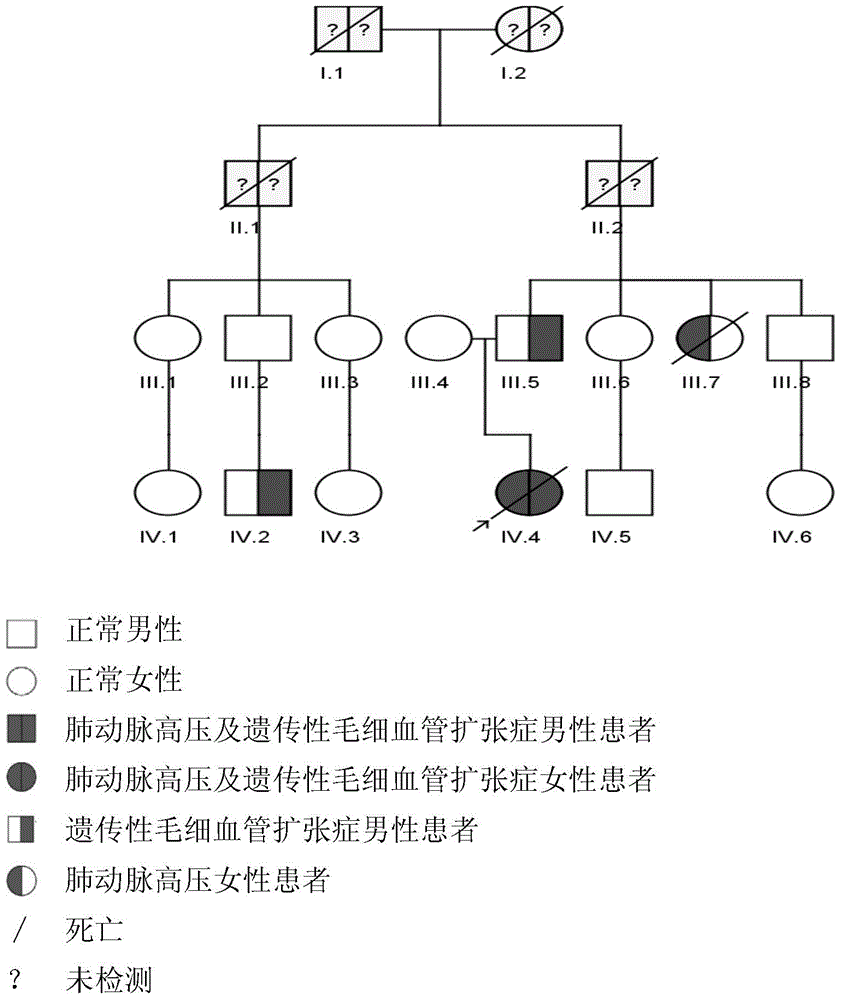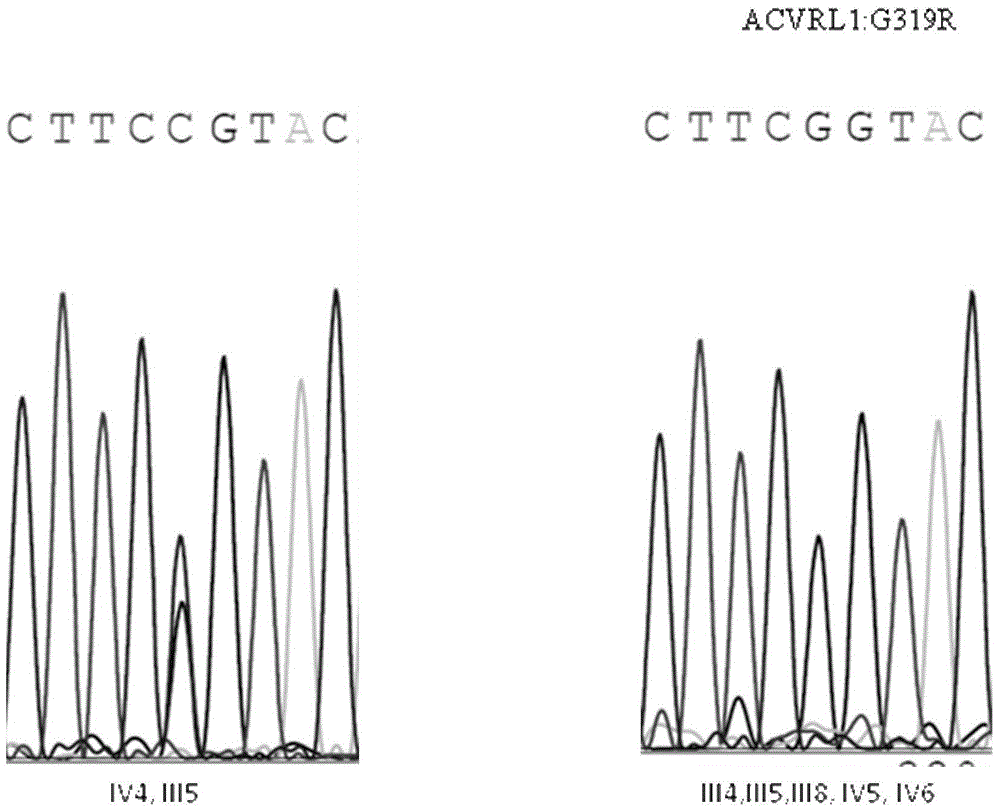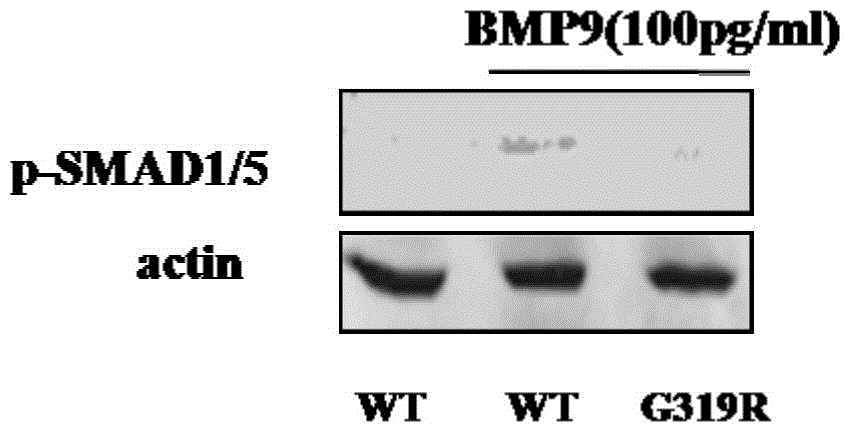Pulmonary hypertension virulence gene ACVRL1 mutation site and application thereof
A gene and amino acid technology, applied in the field of pulmonary arterial hypertension pathogenic gene ACVRL1 mutation site, can solve the problem that the disease pathogenic gene cannot be completely determined
- Summary
- Abstract
- Description
- Claims
- Application Information
AI Technical Summary
Problems solved by technology
Method used
Image
Examples
Embodiment 1
[0041] Example 1. Application of whether the ACVRL1 gene is mutated in identifying whether the sample to be tested is a patient with pulmonary arterial hypertension
[0042] The pedigree of a sample of a patient with pulmonary arterial hypertension to be tested is as follows figure 1 The right side is shown in (I.2, II.2, III.4, III.5, III.6, III.7, III.8, IV.4, IV.5, IV.6), in which pulmonary hypertension There were 3 patients (III.5, III.7, IV.4), and the rest were non-pulmonary hypertension patients.
[0043] Sanger sequencing verifies the results of ACVRL1 gene mutations in each sample in the family of samples from patients with pulmonary arterial hypertension to be tested, as follows:
[0044] 1. Take the anticoagulated whole blood of the sample to be tested, and extract the genomic DNA with the QIAGEN DNA extraction kit;
[0045] 2. Genomic DNA was sent to Sanger sequencing
[0046] The sequencing primers are as follows:
[0047] c.955G>CF-ACGACTCCAGCCTCCCTTAG (Seque...
Embodiment 2
[0057] Embodiment 2, the application of ACVRL1 mutein
[0058] 1. Preparation of ACVRL1 wild-type plasmid and mutant plasmid
[0059] The ACVRL1 wild-type plasmid is a vector obtained by inserting the sequence 1 in the sequence table between the EcoR1 and BamHI sites of the pcDNA3.1 vector (Addgene, #20011).
[0060] The ACVRL1 mutant plasmid is a vector obtained by inserting sequence 2 in the sequence table (replacing G at position 955 of sequence 1 with C, and other nucleotides remain unchanged) inserted between the EcoR1 and BamHI sites of the pCDNA3.3 vector.
[0061] 2. Detection of SMAD1 / 5 phosphorylation level using plasmid
[0062] TGF-β receptors belong to cell surface receptors, including two types --- type I and type II, which itself has a serine kinase catalytic domain. When the ligand TGF-β binds to it, the effect produced makes the downstream type Important transcription factor Smad family serine phosphorylation. Activin receptor-like kinase 1 (ACVRL1 / ALK1) co...
PUM
 Login to View More
Login to View More Abstract
Description
Claims
Application Information
 Login to View More
Login to View More - R&D
- Intellectual Property
- Life Sciences
- Materials
- Tech Scout
- Unparalleled Data Quality
- Higher Quality Content
- 60% Fewer Hallucinations
Browse by: Latest US Patents, China's latest patents, Technical Efficacy Thesaurus, Application Domain, Technology Topic, Popular Technical Reports.
© 2025 PatSnap. All rights reserved.Legal|Privacy policy|Modern Slavery Act Transparency Statement|Sitemap|About US| Contact US: help@patsnap.com



